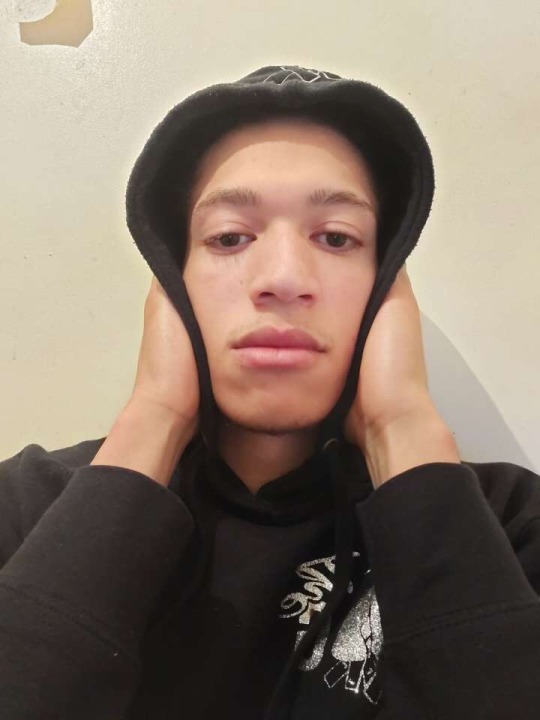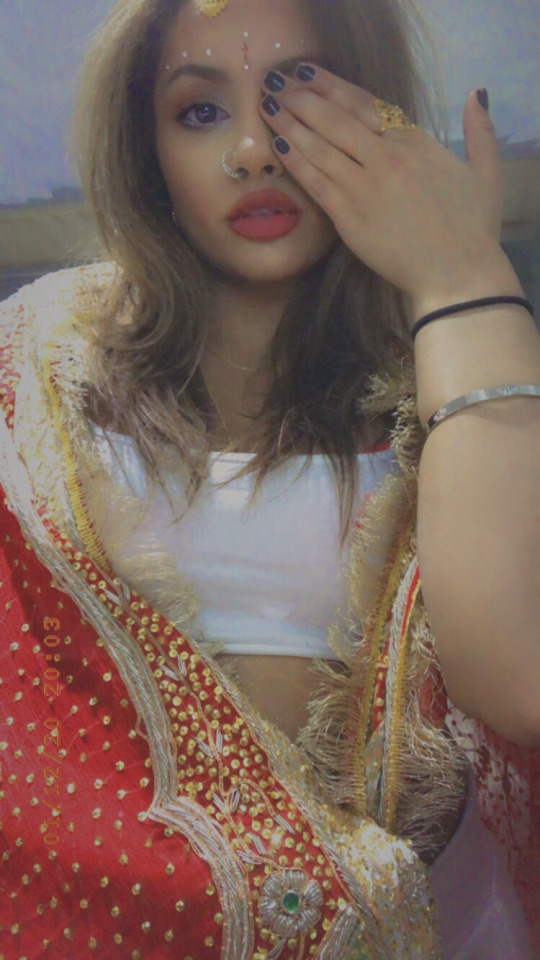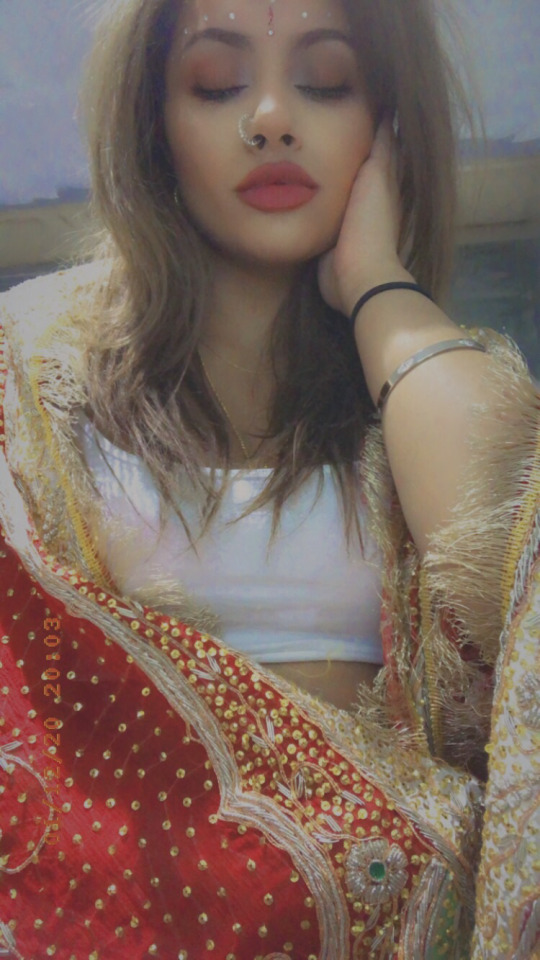Don't wanna be here? Send us removal request.
Text
Final Piece Evaluation
For my final piece I have made a twitter page with my journey of work which can be seen @amiprettynoww. This content includes my makeup looks; the memes I have made; my personal journey and history of colourism in India and Indian communities. I have also looked at the future and present movements which are in motion to change this. In conjunction to this, I have created my own movement using hashtags to combat the hatred for dark skin in India and Indian communities across the globe. It is modelled after the 'see not evil, hear no evil, speak no evil' but I have changed evil to hate; #seenohate #hearnohate #speaknohate. It has matching pictures which people can send in and I will retweet to show support, this is on-going as it is twitter so it can continue to flourish and hopefully change peoples negative ways of thinking. I like how my twitter page takes you on a journey through colourism. If I was to change anything it would be getting to this theme quicker because it took me a while to get here so I did not get as much time on it. To display my work I am sticking up my pictures with my hashtag and my twitter@ so people can follow the page, support and join in its interactive. rather than an artist inspiring my display technique, I have a billboard company because I feel it relates more to my display with the images and information, 'Advertising Agency: Abbott Mead Vickers BBDO, UK'.



0 notes
Text
feedback and refining- after getting feedback on my work, i added more makeup looks to the one that i currently had and i also made memes out of my photos to poke fun at the people of india who retain this colourist mindset, i just wanted to show them how silly they look having this discriminative mindset in this day and age. i made a twiter page to be my work and i showed a timeline of me growing up as well as experiences with colourism ive had and still have and how ive come to ignore peoples comments and just be happy being me becuase if they want to have an issue with skin colour thats their problem not mine. i also retweeted empowering hashtags who are on the same movement as me and added history to the twitter page.





0 notes
Text
making experiments- i experimented with makeup looks and photography styles as well as editing diferences. the makeup looks i changed up with different inspiration behind them. one was a bridal look traditional in outfit and accesroies but with a drama mask and joker style making it a little scary and almost resemble the nun in pictures, i did some everyday basic looks but with a joker/corpes bride look, and a faceless makeup look so theres definetley a variety. with the photography i liked to use my phone but i did try with a camera from workshop. i also edited some pictures with a face manipulating app to emphasise the control factor as well as the false sense of hapiness.










0 notes
Text
research- i researched into colourism in india, the history behind it which is semi based on the caste system but also just on culture, traditions and standards held up by elders who pass it through to all generations. i primary researched into friends and relatives to get their views on colourism in india and we have al had similar experiences, so it shows its quite universal and it really is just a mindset shared through the culture/country. i researched into areas which colourism affects highly and the beauty industry is the one that i chose to zoom into to. advertising for skin whitening treatments, creams and white shades of indian brand foundation are everywhere just forcing this mindset onto you. indian models/singers/actresses all seem to have bleached skin whereas darker skin people are turned down for roles on tv. colourism in marriage ties with beauty as the brides makeup always looks whiter than her skin because that is the standard of beauty to indians. (links to many researched sites on bibliography under essay)
0 notes
Text
summary blog posts
initial ideas - after going through alot of experiments and changing my themes and topics, i ended up with the themes 'control and colourism'. i wanted to show how colourism controls the indian society in pretty much everything; workplace, love, relationships, opprtunities etc. i wanted to give further insight into it as ive experienced it first hand, ive seen it lived it and somehow still get stuck in it. seen as skin bleaching is such a huge industry over in india, i decided to center my work around that issue. using white makeup on brown skin to appear lighter is a trend that has been going on for centuries and it still is, therefore i decided to use makeup as my medium to portray this colourism by doing different makeup looks with different messages.
0 notes
Text
colourism/artsists researched
waseeka nahar and zainab anwar
If you have logged onto Facebook in the last two days, chances are that you have already seen the illustration we are talking about. In a world obsessed by fair skin, 'Dark and Lovely' is a stunning piece of art that is reigniting the very important discussion around colourism and global beauty standards. The illustration shows a dark-skinned woman holding a tube of a face cream called 'Dark and Lovely' - a powerful image that turns the idea of equating fairness with beauty on its head

Created by Bangladesh-based artist Waseka Nahar, the digital illustration was inspired by a picture originally clicked by and featuring Zainab Anwar, a Pakistani artist based in Canada. "Discrimination based on your skin colour is still prevalent. And fairness creams add fuel to the fire," 25-year-old Waseka tells NDTV. "Through my artwork I want to address colourism." "Zainab's picture symbolises that there is a certain 'stigma' - for lack of a better word - surrounding dark skin. The picture boldly says that dark skin is as beautiful as its counterpart," says Waseka. The photograph in question was shared by Zainab on Instagram two days ago.
"I took this image in my bedroom by self timing my camera," Zainab tells NDTV. "The social message behind this is specifically directed to the Indian subcontinent which is why I am in traditional attire." Ask her what inspired her to click the picture and Zainab says: "Growing up I had faced scrutiny for being "dark" and my relatives would give me fairness creams. Thus, I thought of creating a tube with the opposite idea to make people question this whole industry which is promoting so much negativity and ultimately leads to greater issues such as racism." Since being shared on Facebook, Waseka's illustration has collected over 3,000 'shares', 4,000 'likes' and a lot of love online. "Breaking stereotypes and how!" writes one commenter. "Embrace your melanin," says another.
"The newer generation is more aware and is fed up of illogical beauty standards. I knew there would be support from the younger generation," says Zainab. "I am truly speechless. I'm glad this has gone viral because now we can open up a conversation about acceptance and loving yourself as you are," concludes Waseka.
NDTV.com. (2020). Dark And Lovely: The Stunning Artwork Going Viral, And The Pic That Inspired It. [online] Available at: https://www.ndtv.com/offbeat/dark-and-lovely-the-stunning-artwork-going-viral-and-the-pic-that-inspired-it-1919877 [Accessed 14 Jan. 2020].
MARIA QAMAR aka hatecopy Maria Qamar is an artist and author of the book Trust No Aunty.[1] Qamar was born in Pakistan and moved to Mississauga, Ontario at the age of nine.[2] She is known for her satirical lens commenting on the hybridization of South Asian and Canadian culture. She uses a pop art aesthetic to create works that tackle themes surrounding her experiences of racism, the first generation experience, body shaming, classism, and the patriarchy.[3][4] Qamar gained popularity as an artist through her instragram page where she goes by the name of Hatecopy.[5] She has a following of over 125,000 people on her Instagram platform. Qamar has sold work at exhibitions in Toronto, Los Angeles, New York and London. The Mindy Project creator and actor Mindy Kaling collects Qamar's work and her paintings decorate the set of The Mindy Project.[4][6] Trust no aunty won the 2018 Kobo Emerging Writer Prize for humour.[7]
i like her work style mixing the traditional clothing and cultured style with present day issues along with old traditional comments. very similar to what im doing. En.wikipedia.org. (2020). Maria Qamar. [online] Available at: https://en.wikipedia.org/wiki/Maria_Qamar [Accessed 14 Jan. 2020].
TARA AND ANOUSHKA Last week, artist Tara Anand began posting curious illustrations to her Instagram: girls of varying brownness smiling as their eyes were shielded by Pantone color cards. Shade Card, an art series illustrated by Anand and captioned with poetry by Anoushka Agrawal, set out to explore colorism in the South Asian community. Tan, 478C. Wheatish, 7644C. These women were paint chips. And under each illustration was a poem about skin. How it feels, how it looks, how others see it, how we are punished and judged for it. “She sat in front of the mirror in her button-down shirt, the table in front of her/Covered with hairpins, flower rings, jewelry, a pair of scissors/And bottles and bottles of peach-colored make-up. She closed her eyes as her face/Changed shades, getting lighter and lighter with every base.” Kajal spoke with the poet behind the words, Anoushka Agrawal, about why she felt this project was so important. “The primary motivation behind the idea of Shade Card was my personal experience as a dark-skinned girl,” Agrawal said. “For a long time, I grew up being very conscious of my complexion, either because I was teased about it in school or because of the snark comments adults around me made. It took me a long time to be comfortable with my complexion and to stop thinking of it as a weakness, and a lot of that was because I started understanding colorism increasingly as I grew older.” The Shade Card series, Agrawal said, was about exploring colorism and how it affects us so deeply. Complexion and beauty “should have no correlation,” she says. Check out every piece in the series below.
1. Tired but happy, she took a sip out of her water bottle And stepped out of her car. She walked to the lift of her building, her little Earrings dangling from her ears as sweat dangled from the apex of her chin. She had a big performance the following week, because of which her shin Had begun to ache with the long hours of rehearsal, but she didn’t mind. Her Indian classical dance form allowed her to leap, to fly, to find Within her the beauty that she had for years not been able to trust. When she danced, she transcended universes; reality turned to dust. She straightened her kurta, wiped the moist off her cheek with her sleeve, She shook the bag on her shoulder, to make sure she didn’t leave Her ghunghrus behind. She stopped before the four lifts of her building’s lobby, smiling at the watchman Who didn’t smile back. The doors of the lift opened; she entered and suddenly stopped, deadpan When she heard the lady next to her speak. The lady was older, bigger, and had tremendously heavy make-up on; She adjusted her ridiculously shimmery sari and looked at the object of scorn In front of her, at the representative of the category of people that was inferior to her own. “Whose house do you work as the maid in?” For a minute, the girl stared at her, confused. Then, glancing at her dark skin, She understood the lady’s question. Not knowing what to say, Last week, artist Tara Anand began posting curious illustrations to her Instagram: girls of varying brownness smiling as their eyes were shielded by Pantone color cards. Shade Card, an art series illustrated by Anand and captioned with poetry by Anoushka Agrawal, set out to explore colorism in the South Asian community. Tan, 478C. Wheatish, 7644C. These women were paint chips. And under each illustration was a poem about skin. How it feels, how it looks, how others see it, how we are punished and judged for it. “She sat in front of the mirror in her button-down shirt, the table in front of her/Covered with hairpins, flower rings, jewelry, a pair of scissors/And bottles and bottles of peach-colored make-up. She closed her eyes as her face/Changed shades, getting lighter and lighter with every base.” Kajal spoke with the poet behind the words, Anoushka Agrawal, about why she felt this project was so important. “The primary motivation behind the idea of Shade Card was my personal experience as a dark-skinned girl,” Agrawal said. “For a long time, I grew up being very conscious of my complexion, either because I was teased about it in school or because of the snark comments adults around me made. It took me a long time to be comfortable with my complexion and to stop thinking of it as a weakness, and a lot of that was because I started understanding colorism increasingly as I grew older.” The Shade Card series, Agrawal said, was about exploring colorism and how it affects us so deeply. Complexion and beauty “should have no correlation,” she says. Check out every piece in the series below.
1. Tired but happy, she took a sip out of her water bottle And stepped out of her car. She walked to the lift of her building, her little Earrings dangling from her ears as sweat dangled from the apex of her chin. She had a big performance the following week, because of which her shin Had begun to ache with the long hours of rehearsal, but she didn’t mind. Her Indian classical dance form allowed her to leap, to fly, to find Within her the beauty that she had for years not been able to trust. When she danced, she transcended universes; reality turned to dust. She straightened her kurta, wiped the moist off her cheek with her sleeve, She shook the bag on her shoulder, to make sure she didn’t leave Her ghunghrus behind. She stopped before the four lifts of her building’s lobby, smiling at the watchman Who didn’t smile back. The doors of the lift opened; she entered and suddenly stopped, deadpan When she heard the lady next to her speak. The lady was older, bigger, and had tremendously heavy make-up on; She adjusted her ridiculously shimmery sari and looked at the object of scorn In front of her, at the representative of the category of people that was inferior to her own. “Whose house do you work as the maid in?” For a minute, the girl stared at her, confused. Then, glancing at her dark skin, She understood the lady’s question. Not knowing what to say,
Agrawal, N. (2020). Tara Anand and Anoushka Agrawal’s Shade Cards Talk About Colorism Through Poetry - Kajal Magazine. [online] Kajal Magazine. Available at: https://www.kajalmag.com/tara-anand-and-anoushka-agrawals-shade-cards-talk-about-colorism-through-poetry/ [Accessed 14 Jan. 2020].
0 notes
Text
I liked the idea of having the pictures in black and white however I decided to leave them in colour. I feel like being black and white takes away from the shadeism by taking the pigment out the picture but then at the same time I think it makes it look old and I want it to be vibrant so people know it’s now. It’s time to change now. It’s a fresh movement and it’s happening in present day. I also feel like vibrancy really represents India in the way they have bright spices and outfits and flowers and festivals so I like that aspect also.



0 notes
Text
I decided to come full circle with the bridal indian traditional pictures, I think I’ve explored a nice range of makeup looks in between. I wanted to create my own movement for my twitter page in resemblance of ‘see no evil, hear no evil, speak no evil’ but instead of evil I want to do it as ‘see no hate, hear no hate, speak no hate’ to empower everyone of colour into breaking out of this colourist cycle they might feel stuck in.
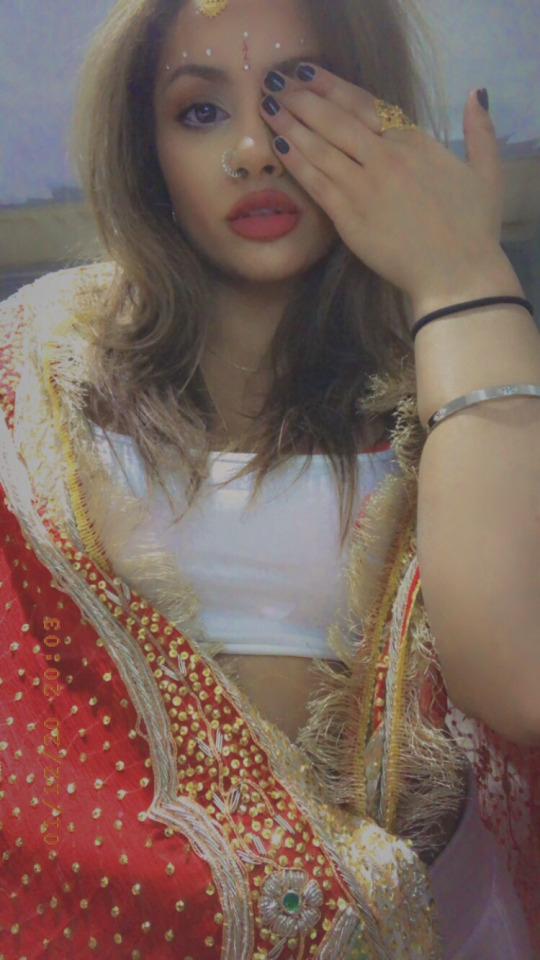

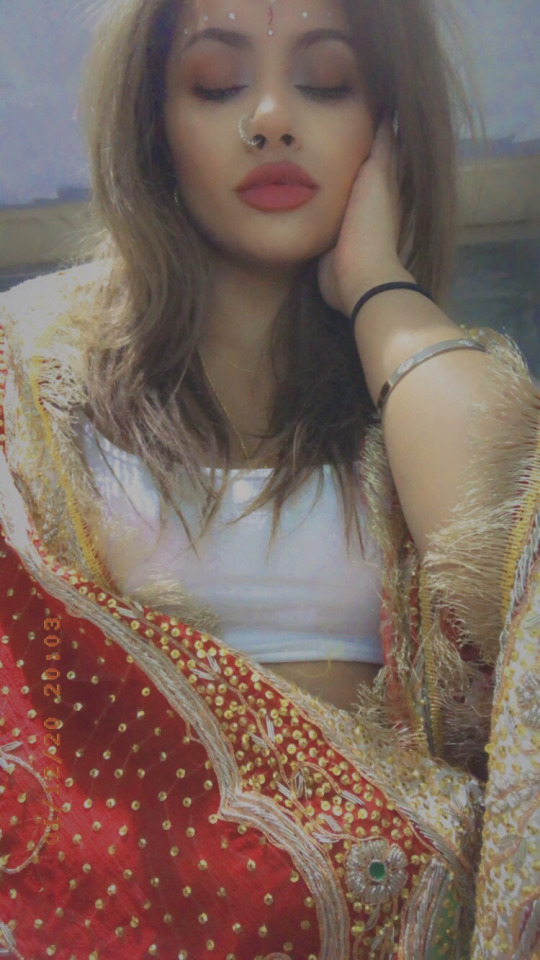
0 notes
Text
I took a picture dressed as my doll I got as a gift from India. It’s an indian bride but again colourism is instilled within everyone in India through so many means. Teaching children to want to look like their dolls who they look nothing like, it’s starts off a colourist mindset from a young age, we need to have darker skin colour dolls so indian children can see it n recognise it as a representation of them almost, they think their dolls are so pretty and glamourous so having a doll who looks like them won’t make them want to change themselves to fit this unrealistic mould India has created.

0 notes
Text


Simple yet effective. I concealed my eyebrows my eyelashes and covered my entire face in foundation. Faceless makeup (how you lose yourself)- this pigmentless featureless being , nobody notices your features in India that isn’t what makes you considered beautiful or not, it’s just your colour that’s seen that’s what determines your beauty. This is how you’re seen in this culture/society, your skin defines you. No eyes open so you can’t see emotion (eyes are the windows to the soul), eyebrows aren’t important? Just the skin colour hence the few swatch marks on the side of my face in the picture.
This is my favourite look I’ve done, I really like how it’s simplicity can portray so many messages. I could have done a range of skin colours but I didn’t want to wear super dark foundation and demonstrate blackface however the one tone is also a valid point to colourism because India only accept one shade so it was effective as is. I could have wore a bald cap and nude clothes to emphasise the skin to be the only thing noticeable but I do like how everything else in the picture looks normal n then the face is just off.
0 notes
Text

This makeup look was a 3rd take on the original mask makeup however it is way less dramatised. A more grey toned mask effect- more realistic face makeup compared to the actual people of India who do their makeup with just white on top of the face no blending into the neck, it’s not flattering it does not look believable, but that’s how they do makeup. Shockingly a lot of makeup artists still try to make darker skin women look lighter or don’t cater to different skin shades because they can’t open their minds enough to see that there’s more than one skin colour and they’re all equally perfect. India is a very religion oriented place so for them to question and taunt gods creations (people of all skin colours) is very ironic., it’s a more true colour reflexion as it’s a mask look but not too structured, the lack of pigmentation as a pose to the first 2 versions because I wanted it to look unnatural how it does when it’s in reality, colour difference in the face n neck, no blending yet nobody realises this?, joker like also, the women usually do this pale skin ghostly base with dark black smudge eyeliner (kajal it’s called there) and pigmented lips natural so it does give off this joker appearance with all the grey toned white face powder I used.
I could have wore indian attire to demonstate how it appears in real situations as well as in the sun light (it’ looks worst in indian sun) but there’s no sun in Birmingham winter so I was unable to make that happen. I could have bronzed the outer portion of my face (I bronzed my neck) to show more of a dramatic colour change
0 notes
Text

I added an hypnotised eye to the makeup look. Hypnosis eye- the society in India follow these rules of colourism blindly like they’re under a spell, all the advertising & constant negative comments hypnotise you into believing you must change your colour to fit in. Right so in a predominantly brown country, fitting in means looking white? They’ve all lost touch with reality at this point coz I don’t know how your brain can be wired so wrongfully that you believe this. Until people open their eyes and think for themselves and realise the wrong, things won’t change, that’s what I want this makeup to portray.
To improve them I could make the hypnosis eye more dramatic in both size and colour opacity. I could have edited in my open eyes hypnosis to look like it’s coming from within.
0 notes
Text

I did a few new makeup looks. This one is a broken doll. Broken doll makeup - ; showing you will break in becoming this pigmentless person, the fake looking person, all the treatments you do to bleach your skin they age you, which works well with the broken face parts, like not a fresh new doll, you also break your spirit and you are fooled into believing you are happy by becoming this white skin ideal, you lose your true self trying to become a reflexion if you that only others want to see, is plastic better? Fake better? That is what is perceived because being natural (skin colour) is not accepted and it is ridiculed harshly. The Dodo eyes show a lack of feeling, numbness toward the subject because they’ve given up the fight for justice and feel defeated
I’m pleased with the makeup, if I could do it again I would just make the broken parts of the ‘doll’ have more depth and dimension to look more realistic as well as highlighting the face in area to show lift from the cracks. None the less, it is a doll makeup look and a lot of dolls especially broken and old won’t have so much detail left most of it would’ve rubbed off or covered in dust.
0 notes
Text
to improve picture quality, I took out a professional ccamera from the workshops and took pictures of my model, serena, wearing different makeup looks I did on her.

https://wetransfer.com/downloads/ed56420bd5b2c42a4f6369ba864210cd20200114223453/f971e6aba857977b5e7343809991b4ce20200114223454/7f05bf
That is the link to all the camera photos ^^ (too many to upload on here)
I did a makeup look inspired by Roy litchensteins crying girl, (again bride inspired) to show the sadness in women’s faces that they are forced to hide while being pressured to change their appearances in hopes the husband at the wedding arranged for her, will find her attractive& her in-laws will love her. I did white dots on top of Serena’s face to show the white skin colour used as a shield from taunting on top of the skin, in the gaps you see her real brown skin coming through and it just shows you no matter how hard you try to hide from yourself, you can’t. Nor should you have to.
I also did a white center face on her to recreate my original makeup look but in a more ‘daytime setting’ (not bridal), it’s not just special occasions women must try to appear a certain way to appeal to others, it is a reoccurring issue in daily lives. Keeping up an act. Whether you want to or not, you feel pressured into doing so to be accepted.
Although Serena was a great model, I decided i could do makeup better on my own face as the canvas. I also decided I preferred the way that the pictures looked when i take them on my phone where I can manipulate them and edit them to look a certain way. I also want to point out that my photos are for memes, and memes generally have pictures from viral videos and the quality is always poor so I think it’s more effective anyway to use my phone images.
0 notes

